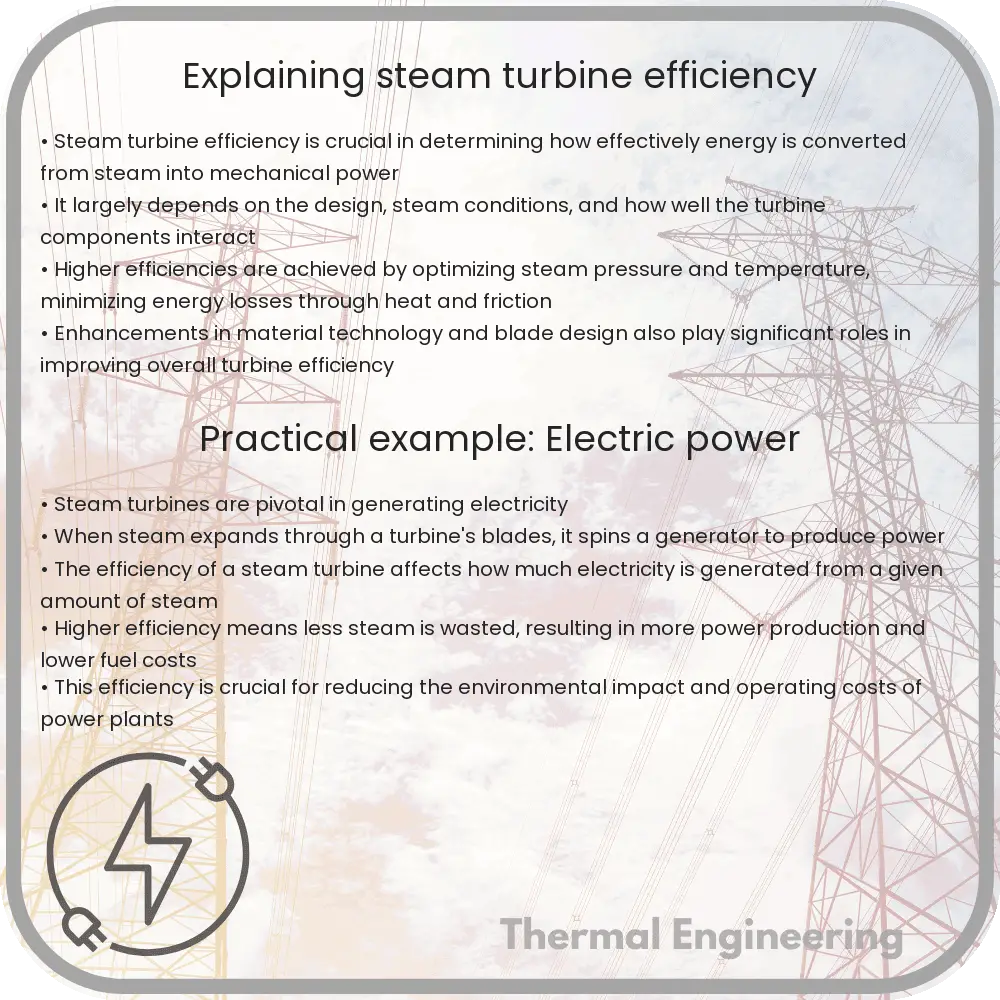Learn about steam turbine efficiency, its calculation, factors influencing it, and ways to enhance its performance for better energy use.

Understanding Steam Turbine Efficiency
Steam turbines are a critical component in various industrial applications, ranging from electricity generation to marine propulsion. The efficiency of a steam turbine determines how effectively it converts thermal energy from steam into mechanical energy. This article explores what steam turbine efficiency is, how it is calculated, and the factors that affect it.
What is Steam Turbine Efficiency?
Steam turbine efficiency is a measure of how well a turbine can convert the energy from steam into useful work. This efficiency is typically expressed as a percentage, indicating the ratio of the turbine’s mechanical power output to the thermal energy input from the steam. High efficiency in a steam turbine means that less energy is wasted and more is converted into useful work.
Calculating Steam Turbine Efficiency
The efficiency of a steam turbine (\eta) can be calculated using the formula:
\[
\eta = \left(\frac{{\text{{Output Power}}}}{{\text{{Input Heat Energy}}}}\right) * 100\%
\]
Where:
- Output Power is the mechanical power generated by the turbine, usually measured in watts (W).
- Input Heat Energy is the energy content of the steam entering the turbine, typically measured in joules (J).
To obtain these values, specific measurements and calculations related to steam properties (such as temperature, pressure and flow rate) and turbine output (such as torque and rotational speed) are required.
Factors Affecting Steam Turbine Efficiency
Several factors can influence the efficiency of a steam turbine:
- Steam Conditions: Higher steam pressures and temperatures generally improve turbine efficiency because the steam contains more energy that can be converted into mechanical work. However, there are practical limits to the conditions that can be achieved and tolerated by the turbine materials.
- Turbine Design: The configuration of the turbine (e.g., impulse or reaction turbine) and the precision in the manufacturing of the turbine blades play a significant role in determining efficiency. Optimization of the blade shape and the flow passages can greatly reduce energy losses.
- Exhaust Steam Conditions: If the steam leaves the turbine at a high energy state, that energy is wasted. Therefore, improving the condenser pressure and ensuring efficient exhaust steam flow is crucial.
- Operational Practices: Proper maintenance and operation of the turbine ensure minimal energy losses due to wearing of parts, leakages, or suboptimal steam flows.
Improving Steam Turbine Efficiency
To enhance the efficiency of a steam turbine, engineers focus on:
- Using advanced materials that can withstand higher temperatures and pressures.
- Designing more aerodynamically efficient turbine blades to minimize energy losses caused by friction and turbulence.
- Implementing better steam cycle designs, like reheat and regeneration, which reuse the steam exhaust for additional work.
- Regular maintenance to ensure the systems remain in peak operational condition, reducing inefficiencies caused by wear and tear, fouling, and other disturbances.
In conclusion, steam turbine efficiency not only influences operational costs but also impacts environmental sustainability by reducing waste and energy consumption. By understanding and optimizing the factors affecting turbine efficiency, industries can achieve better performance and contribute to more efficient energy use globally.